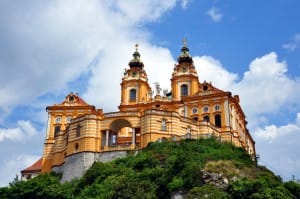5 Towns to Visit in Austria
 When it comes to breathtaking countryside and mountainous terrain, Austria has long cornered the market. But beyond the Alpine charm and friendly atmosphere, there is much more to this beautiful country than meets the eye. Like history? How far back would you like to go? Perhaps back to a time when Mozart and Strauss roamed the charming streets. Or, further – to Roman times or maybe even the Stone Age. Austria’s many layers run deep, and it is a country that has been built on its rich, fascinating past. Yet, somehow there is a modern undercurrent that breathes new life into its many quaint cities and towns. Five such towns are particularly noteworthy, and should be at the top of any Austrian visitor’s must-see list.
When it comes to breathtaking countryside and mountainous terrain, Austria has long cornered the market. But beyond the Alpine charm and friendly atmosphere, there is much more to this beautiful country than meets the eye. Like history? How far back would you like to go? Perhaps back to a time when Mozart and Strauss roamed the charming streets. Or, further – to Roman times or maybe even the Stone Age. Austria’s many layers run deep, and it is a country that has been built on its rich, fascinating past. Yet, somehow there is a modern undercurrent that breathes new life into its many quaint cities and towns. Five such towns are particularly noteworthy, and should be at the top of any Austrian visitor’s must-see list.
Linz
This city, with ancient Roman roots, is the third largest in the country. Despite a rocky past that includes ties to Adolf Hitler and the Nazi regime, Linz has developed into a modern, vibrant city. It is particularly known for the arts and music scene that is so prominent there, from the multitude of museums to the many fairs and festivals that are held there each year. Then, of course, there’s Wilhering Abbey, a Cistercian monastery that serves as a main focal point of the city and a favorite stop among visitors. The monastery features a number of beautiful buildings that have been kept up over the centuries, and offer wonderful examples of exquisite Rococo architectural design, particularly the church. If rich history and culture are what you’re looking for, you’ll certainly find what you’re looking for in this magnificent city.
Durnstein
In stark contrast to Linz, the tiny town of Durnstein doesn’t boast nearly as high a population, nor is it as modern. To the contrary, Durnstein has somehow managed to maintain its old-world atmosphere, and it’s long been touted as one of the most romantic places in Austria – perhaps even the world. Given its prime location, along the charming Danube River and that fact that it also happens to be home to some world famous wine-growing areas, this is no surprise. The town received its name from the medieval castle that proudly overlooked it, which once served as the prison for Richard the Lion-Hearted and the ruins of which are still visible today.
Another smaller city that exudes old-world charm and ancient history, Melk was once a peaceful haven for Benedictine monks. In fact, one of the town’s most popular sites is the Melk Abbey. This impressive structure is located high atop a rocky outcrop and is considered one of the most well-known monastic sites in the world. Founded in 1089, the abbey features an impressive library that is home to fascinating relics and medieval manuscripts. Today it still serves as a school to some 900 pupils. Aside from the abbey, and despite its smaller size, Melk offers quite a few other fascinating examples of architectural styles and designs that have evolved over the centuries.
Krems
Combining the best of the three previously mentioned cities, Krems offers a vibrant modern atmosphere that intertwines seamlessly with its rich past. The city’s historical center is considered one of the most beautiful in all of Europe, and played a pivotal role in Krems being named a UNESCO World Heritage Site in the year 2000. But this town’s roots go well beyond the centuries-old art and architecture it has become known for. In fact, Austria’s oldest known grave – that of an ancient child dating back some 27,000 years ago – was discovered here. In addition to its rich historical and cultural diversity, Krems is also well known for the wine that’s produced there, particularly the varieties of Grüner, Veltliner and Riesling. Wine making is a tradition that has been interwoven into the city’s past for as long as we can trace it back, and one sip of the exquisite Krems wines will tell you, they certainly know what they’re doing!
Klosterneuburg
Another lovely historic town, Klosterneuburg features a uniquely hilly terrain covered in unassuming homes and buildings, yet is just a stone’s throw away from Vienna, a decidedly modern city that is pulsating with excitement and teeming with life. One could say it’s the best of both worlds. Among Klosterneuburg’s atmosphere of charm and culture there is ample wine making and plenty of historical buildings to admire. Of particular note is the Stift Klosterneuburg Monastery, which has roots that date back as far as around 1108. The buildings have been kept in remarkably good condition over the centuries, and remain a focal point of visitors, who can enjoy modern-day tours of the monastery.
Of the many beautiful destinations in Europe, perhaps none offer the rich history, deep-rooted culture and breathtaking scenery as Austria. From ancient graves to Roman ruins, from traditional wine making to exquisite art and architecture, Austria provides the perfect combination of old-world charm and modern-day flare for a vibrant atmosphere you won’t soon forget. These five cities embody the very best that Austria has to offer, and are a must for any would-be Austrian tourist.

